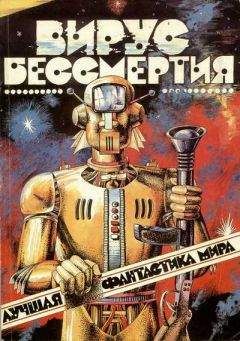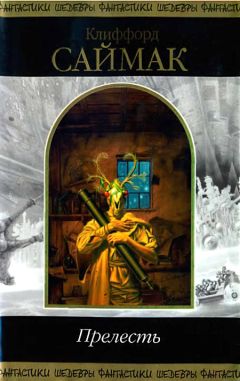James, W. (1895, December 24). Letter to E. L. Godwin. Cited by Hansen, p. 14.
Jonason, P. K., Li, N. P., & Teicher, E. A. (2010). Who is James Bond? The Dark Triad as an agentic social style. Individual Differences Research, 8(2), 111–120.
Lembcke, J. (2013). PTSD: Diagnosis and identity in post-empire America. Lanham, MD: Lexington.
Maslow, A. (1954). Motivation and personality. New York, NY: Harper & Row.
Meiring, L., Subramoney, S., Thomas, K. G. F., Decety, J., & Fourie, J. (2014). Empathy and helping: Effects of racial group membership and cognitive load. South African Journal of Psychology, 44(4), 426–438.
Mendez, M. E, Owens, E. M., Jimenez, E. E., Peppers, D., & Licht, E. A. (2013). Changes in personality after mild traumatic brain injury from primary blast vs. blunt forces. Brain Injury, 27(1), 10–18.
Mercer, M. (2001). In defense of weak psychological egoism. Erkenntnis, 55(2), 217–237. Mitchell, D. G. V., Avny, S. В., & Blair, R. J. R. (2006). Divergent patterns of aggressive and neurocognitive characteristics in acquired versus developmental psychopathy. Neurocase, 12(3), 164–178.
Patrick, С. (2005). Handbook of psychopathy. New York, NY: Guilford.
Paulhus, D. L., & Williams, J. M. (2002). The dark triad of personality: Narcissism, Machiavellianism, and psychopathy. Journal of Research in Personality, 36(6), 556–563. Peterson, C, & Seligman, M. E. P. (2004). Character strengths and virtues. Washington, D. C.: American Psychological Association.
Popova, M. (n.d.). The Heroic Imagination Project. Brain Pickings: http://www.bram-pickings.org/2011/02/07/philip-zimbardo-heroic-imagination-project/.
Rao, V., Spiro, J. R., Schretlen, D. J., & Cascella, N. G. (2007). Apathy syndrome after traumatic brain injury with deficits in schizophrenia. Psychosomatics: Journal of Consultation and Liaison Psychiatry, 48(3), 217–222.
Rossi, A. S. (2001). Caring and doing for others: Social responsibility in the domains of family, work, and community. Chicago, IL: University of Chicago Press.
Scherrer, H. (2003, August 27). Professor Philip Zimbardo: The interview. http://fore-justice.org/zimbardo/p_zimbardo_interview.htm.
Seligman, M. E. P., (1972). Learned helplessness. Annual Review of Medicine, 23(1), 407–412.
Seligman, M. E. P. (1998). Building human strength: Psychology's forgotten mission. АРА Monitor, 29(1), 1.
Seligman, M. E. P., & Maier, S. F. (1967). Failure to escape traumatic shock. Journal of Experimental Psychology, 74(1), 1–9.
Shamay-Tsoory, S. G., Aharon-Peretz, J., & Perry, D. (2009). Two systems for empathy: A double dissociation between emotional and cognitive empathy in inferior frontal gyrus versus ventromedial prefrontal lesions. Brain, 132(3), 617–627.
Stanton, G. H. (2007). Foreword to the second edition. In J. Waller, Becoming evil (2nd ed., pp. vii-ix). New York, NY: Oxford University Press.
Stone, M. H. (2009). The anatomy of evil. Amherst, NY: Prometheus.
Thomas, G., & Batson, C. D. (1981). Effect of helping under normative pressure on self-perceived altruism. Social Psychology Quarterly, 44(2), 127–131.
Tonigan, J. S., Rynes, K., Toscova, R., & Hagler, K. (2013). Do changes in selfishness explain 12-step benefit? A prospective lagged analysis. Substance Abuse, 34(1), 13–19.
Wakefield, J. C. (1993). Is altruism part of human nature? Toward a theoretical foundation for the helping professions. Social Service Review, 67(3), 406–458.
Waller, J. (2002/2007). Becoming evil. New York, NY: Oxford University Press.
Warneken, F., & Tomasello, M. (2009). The roots of human altruism. British Journal of Psychology, 100(3), 455–471.
Zimbardo, P. G. (1969). The human choice: Individuation, reason, and order versus deindividuation, impulse, and chaos. In W. J. Arnold & D. Levine (Eds.), Nebraska Symposium on Motivation (Vol. 17). Lincoln, NE: University of Nebraska Press.
Zimbardo, P. G. (1971, October 25). The psychological power and pathology of imprisonment. A statement prepared for the U. S. House of Representatives Committee on the Judiciary, Subcommittee No. 3: Hearings on Prison Reform, San Francisco, CA. Zimbardo, P. (2007). The Lucifer effect: Understanding how good people turn evil. New York, NY: Random House.
Anderson, K. J., & Moesta, R. (1996). Lightsabers. New York, NY: Boulevard
Bormann, J. E., Hurst, S., & Kelly, A. (2013). Responses to Mantram Repetition Program from veterans with posttraumatic stress disorder: A qualitative analysis. Journal of Rehabilitation Research & Development, 50(6), 769–784.
Carlson, L. E., Beattie, T. L., Giese-Davis, et al. (2015). Mindfulness-based cancer recovery and supportive-expressive therapy maintain telomere length relative to controls in distressed breast cancer survivors. Cancer, 121(3), 476–484.
Chow, Y. W., & Tsang, H. W (2007). Biopsychosocial effects of qigong as a mindful exercise for people with anxiety disorders: A speculative review. The Journal of Alternative and Complementary Medicine, 13(8), 831–840.
Query Note: For Davidson, R. J., please insert all authors' names in this list.
Davidson, R. J., Kabat-Zinn, J., Schumacher, J., et al.(2003). Alterations in brain and immune function produced by mindfulness meditation. Psychosomatic Medicine, 65(4), 564–570.
Epel, E. S., Puterman, E., Lin, J., Blackburn, E., Lazaro, A., & Mendes, W. B. (2013). Wandering minds and aging cells. Clinical Psychological Science, 1(1), 75–83.
Forman, E. M., Herbert, J. D., Moitra, E., Yeomans, P. D., & Geller, P. A. (2007). A randomized controlled effectiveness trial of acceptance and commitment therapy and cognitive therapy for anxiety and depression. Behavior Modification, 31(6), 772–799.
Fulwiler, С. E., & de Torrijos, F. (2011). Mindfulness and health. Psychiatry Information in Brief, 8(1), Article 1; http://escholarship.umassmed.edu/pib/vol8/iss2/l.
Gilbert, P. (2005). Compassion: Conceptualisations, research and use in psychotherapy. London, UK: Routledge.
Hanh, T. N. (1999). The heart of the Buddha's teaching: Transforming suffering into peace, joy and liberation – The four noble truths, the noble eightfold path, and other basic Buddhist teachings. New York, NY: Random House.
Hayes, S. C. (2003). Buddhism and acceptance and commitment therapy. Cognitive and Behavioral Practice, 9(1), 58–66.
Hayes, S. C, Luoma, J. В., Bond, F. W, Masuda, A., & Lillis, J. (2006). Acceptance and commitment therapy: Model, processes and outcomes. Behaviour Research and Therapy, 44(1), 1–25.
Hayes, S. C, Pistorello, J., & Levin, M. E. (2012). Acceptance and commitment therapy as a unified model of behavior change. The Counseling Psychologist, 40(7), 976–1002.
Kabat-Zinn, J. (1990). Full catastrophe living: Using the wisdom of your body and mind to face stress, pain, and illness. New York, NY: Delacorte.
Kearney, D. J., Malte, С A., McManus, C, Martinez, M. E., Felleman, В., & Simpson, T. L. (2013). Loving-kindness meditation for posttraumatic stress disorder: A pilot study. Journal of Traumatic Stress, 26(4), 426–434.
Query Note: For Killingsworth, is 932 correct? Is there just one page?
Killingsworth, M. A., & Gilbert, D. T. (2010). A wandering mind is an unhappy mind. Science, 330(6006), 932.
Kjaer, T. W, Bertelsen, C, Piccini, P., Brooks, D., Alving, J., & Lou, H. С (2002). Increased dopamine tone during meditation-induced change of consciousness. Brain Research: Cognitive Brain Research, 13(2), 255–259.
Litvin, E. В., Kovacs, M. A., Hayes, P. L., & Brandon, Т. H. (2012). Responding to tobacco craving: experimental test of acceptance versus suppression. Psychology of Addictive Behaviors: Journal of the Society of Psychologists in Addictive Behaviors, 26(4), 830–837.
Luoma, J. В., & Villatte, J. L. (2012). Mindfulness in the treatment of suicidal individuals. Cognitive and Behavioral Practice, 19(2), 265–276.
LucasArts. (2006). Star Wars: Knights of the Old Republic [Xbox video game]. San Francisco, CA: Lucasfilm.
Roemer, L., Lee, J. K., Salters-Pedneault, K., Erisman, S. M., Orsillo, S. M., & Mennin, D. S. (2009). Mindfulness and emotion regulation difficulties in generalized anxiety disorder: Preliminary evidence for independent and overlapping contributions. Behavior Therapy, 40(2), 142–154.
Scarlet, J., Lang, A. J., & Walser, R. D. (in press). Acceptance and commitment therapy (ACT) for posttraumatic stress disorder. In G. Wynn & D. Benedek (Eds.), Complementary and alternative medicine for PTSD. Cambridge, MA: Oxford University Press.
Query Note: For Scarlet, J., Lange: is Cambridge, MA okay? Also, for Stover, comma was inserted after Star Wars, per Google search.
Stover, M. W. (2005). Star Wars, Episode III: Revenge of the Sith. London, UK: Century.
Twohig, M. P. (2009). Acceptance and commitment therapy for treatment-resistant posttraumatic stress disorder: A case study. Cognitive and Behavioral Practice, 16(3), 243–252.
Query Note: Walse, R. D. and Windham, R., Trevas are not cited in Notes for this chapter. Delete?
Walser, R. D., & Westrup, D. (2007). Acceptance & commitment therapy for the treatment of post-traumatic stress disorder and trauma-related problems: A practitioner’s guide to using mindfulness and acceptance strategies. Oakland, CA: New Harbinger.
Windham, R., Trevas, C., & Edwards, T. L. (2007). Star Wars: Jedi vs. Sith: The essential guide to the Force. New York, NY: Del Rey.
Allston, A. (2010). Outcast (Star Wars: Fate of the Jedi). New York: Del Rey.
Botvinick, M., & Cohen, J. (1998). Rubber hands “feel” touch that eyes see. Nature, 391, 756–760.
Cardinali, L., Frassinetti, F., Brozzoli, C., Roy, A. C., Urquizar, C., & Farnè A (2009). Tool-use induces morphological updating of the body schema. Current Biology, 19(12), R478–479.
Ehrsson, H. H., Rosén, B., Stockselius, A., Ragnö, C., Köhler, P., & Lundborg, G. (2008).
Upper limb amputees can be induced to experience a rubber hand as their own. Brain, 131, 3443–3452.
Ganguly, K., & Carmena, J. M. (2009). Emergence of a stable cortical map for neuroprosthetic control. PLoS Biology, 7(7), e1000153.
Gentleman, A. (2012, August 31). US Paralympic coverage disappointing, says chef de mission. The Guardian: http://www.theguardian.com/sport/2012/aug/31/us-paralympicstv-coverage-disappointing.
Lewis, J. W. (2006). Cortical networks related to human use of tools. The Neuroscientist, 12(3), 211–231.
Penfield, W., & Rasmussen, T. (1950). The cerebral cortex of man: A clinical study of localization of function. New York, NY: Macmillan.
Ramachandran, V. S., & Altschuler, E. L. (2009). The use of visual feedback, in particular mirror visual feedback, in restoring brain function. Brain, 132, 1693–1710.
Ramachandran, V. S., & Hirstein, W. (1998). The perception of phantom limbs: The D. O. Hebb lecture. Brain, 121, 1603–1630.
Stover, M. (2005). Star Wars Episode III: Revenge of the Sith. New York: Del Rey.
Suminski, A. J., Tkach, D. C., Fagg, A. H., & Hatsopoulos, N. G. (2010). Incorporating feedback from multiple sensory modalities enhances brain-machine interface control. Journal of Neuroscience, 30(50), 16777–16787.
Adler, A. (1908/1959). Understanding human nature. New York, NY: Fawcett.
Adler, A. (1924). The practice and theory of individual psychology. London, UK: K. Paul, Trench, Trubner & Company.
Goldstein, K. (1939/1995). The organism: A holistic approach to biology derived from pathological data in man. New York, NY: Zone.
Query Note: Is Koltko spelled correctly? See Notes 12. Also, insert first initial or two. Per Google search, this is M. E. Also, fix 302–3317.
Koltko-Rivera (2006). Rediscovering the later version of Maslow's hierarchy of needs: Self-transcendence and opportunities for theory, research, and unification. Review of General Psychology, 10(4), 302–3317.
Kornhauser, R. R. (1978). Social sources of delinquency. Chicago, IL: University of Chicago Press.
Maslow, A. (1943). A theory of human motivation. Psychological review, 50(4), 370–396.
Maslow, A. (1954). Motivation and personality. New York, NY: Harper.
Maslow, A. (1966). The psychology of science: A reconnaissance. New York, NY: Harper & Row.
Maslow, A. (1970). Motivation and personality (2nd ed.). New York, NY: Harper & Row.
Maslow, A. (1971). The farther reaches of human nature. New York, NY: Viking Press.
Millon, T, Davis, R., Millon, C, Escovar, L., & Meagher, S. (2004). Personality disorders in modern life.New York, NY: Wiley.
Schacter, D. L., Gilbert, D. T, & Wegner, D. M. (2011). Human needs and self-actualization. Psychology (2nd ed.). New York, NY: Worth.
Cattell, R. B. (1946). The description and measurement of personality. New York, NY: World Book.
Cattell, R. В., Cattell, A. K., & Cattell, H. E. P. (1993). 16PF questionnaire (5th ed.).
Champaign, IL: Institute for Personality and Ability Testing. Denning, T. (2003). Tatooine ghost (Star Wars). New York, NY: LucasBooks, Random House.
Eysenck, H. J. (1947). Dimensions of personality. London, UK: Routledge & Kegan Paul.
Eysenck, H. J., & Eysenck, S. B. G. (1976). Psychoticism as a dimension of personality. London, UK: Hodder and Stoughton.
Goldberg, L. R. (1981). Language and individual differences: The search for universale in personality lexicons. Review of Personality and Social Psychology, 1, 141–165.
McCrae, R. R., & Costa, P. T. (1985). Updating Norman's "adequate taxonomy": Intelligence and personality dimensions in natural language and in questionnaires. Journal of Personality and Social Psychology, 49, 710–721.
McCrae, R. R., & Costa, P. T. (1987). Validation of the five-factor model of personality across instruments and observers. Journal of Personality and Social Psychology, 52(1), 81–90.
McCrae, R. R. & Costa, P. T. (1990). Personality in adulthood. New York: Guilford.
McCrae, R. R., & John, O. P. (1992). An introduction to the Five-Factor Model and its applications. Journal of Personality,60(2), 175–215.
Norman, W. T. (1963). Toward an adequate taxonomy of personality attributes: Replicated factor structure in peer nomination personality ratings. Journal of Abnormal and Social Psychology, 66(6), 574–583.
Saraglou, V. (2002). Religion and the five factors of personality: A meta-analytic review. Personality and Individual Differences, 32, 15–25.
Tupes, E. C, & Christal, R. E. (1961). Recurrent personality factors based on trait ratings. USAF ASD Technical Report No. 61–97. Lackland Airforce Base, TX: U. S. Air Force.
Anderson, K. J. (1996). Therefore I am: The tale of IG-88. In K. J. Anderson (Ed.), Tales of the bounty hunters. New York, NY: Spectra.
Query Note: For Arras, К. O., please flush out reference.
Arras, К. O., & Cerqui, D. (2005). Do we want to share our lives and bodies with robots? A 2000 people survey. No. LSA-REPORT-2005–002.
Barra-Chicote, R., Yamagishi, J., King, S., Montero, J. M., & Macias-Guarasa, J. (2006).
Prosodic and segmental rubrics in emotion identification. 2006 IEEE International Conference on Acoustics, Speech and Signal Processing. ICASSP 2006 Proceedings, p. I–I.




